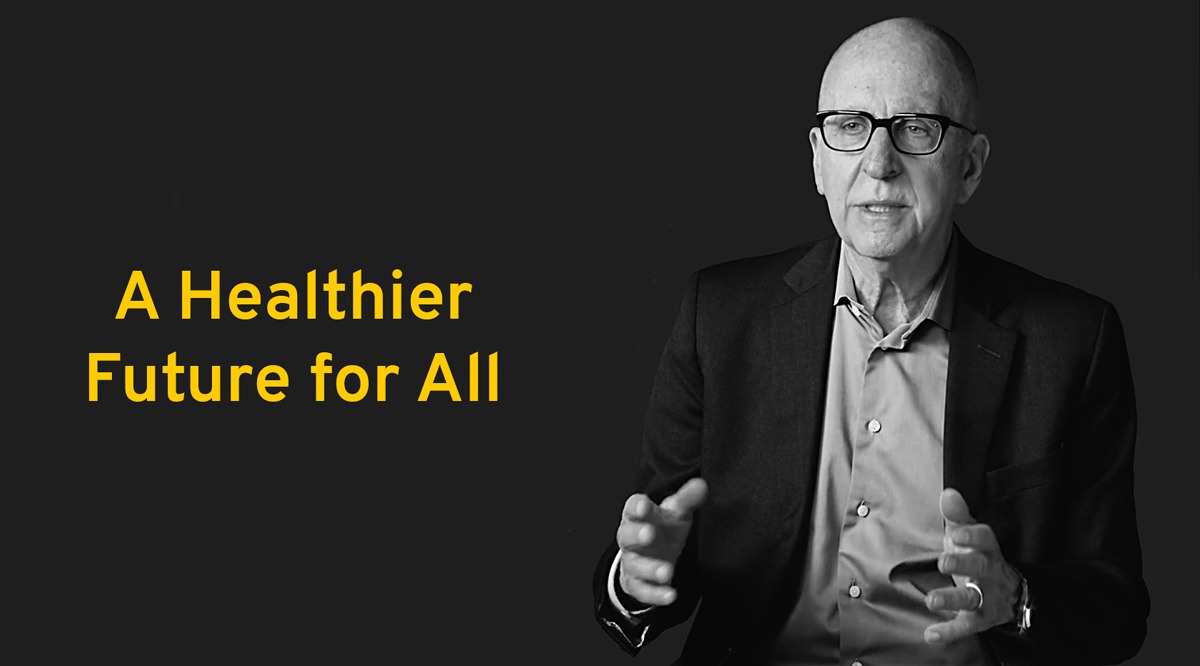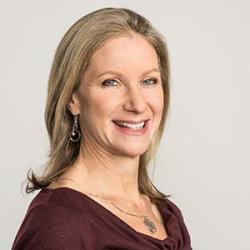
“A healthier future for all.”
That is the vision behind a new and comprehensive strategic plan developed by the AAMC (Association of American Medical Colleges) and launched on Oct. 27 to guide medical schools and teaching hospitals in responding to the rapidly changing environments of medical education, health care, and biomedical research.
Developed in partnership with the AAMC Board of Directors and Leadership Team, and after seeking broad input from the AAMC’s membership and the academic medical community, the strategic plan lays out this new vision and 10 action plans designed to rethink the nation’s approach to patient care, strengthen the medical education continuum, support the scientific workforce, and address decades of inequities.
“The nation faces many seemingly intractable challenges in health care,” says AAMC President and CEO David J. Skorton, MD. “As the only association dedicated to transforming health through medical education, patient care, scientific research, and community collaborations, the AAMC is prepared to tackle these challenges and lead the way to a healthier future.”
AAMCNews sat down with Skorton to discuss the greatest challenges facing medicine today, the 10 action plans put in place to address them, and the path forward for the AAMC and the medical schools, teaching hospitals, health systems, and academic societies that together comprise academic medicine.
This interview has been edited for brevity and clarity.
The AAMC strategic plan was developed after a comprehensive environmental scan of the academic landscape in the areas of medical education, health care, and biomedical research. Can you talk briefly about the results of that scan and the biggest challenges facing academic medicine today?
Over a period of several months — with tremendous input from the AAMC staff, from attendees at the 2019 Learn Serve Lead annual meeting, and others — we did a broad environmental scan which was expertly engineered by our colleague, [AAMC Senior Director of Strategy and Innovation Development] Bill Mallon. The findings were not entirely surprising, but they were striking and showed how long the path is that we need to follow to reach our goals.
First, the demographics of the United States are profoundly affecting society and social policy, especially the increase in diversity along all dimensions. Health care costs and the lack of affordability of health care is absolutely unsustainable. That affordability issue, by the way, has gotten even worse since the pandemic started. In equilibrium times, roughly half of the population gets its health care benefits from employment-related health insurance. The economic downturn related to the pandemic has knocked a lot of people out of work. So, you lose your job and you get two pieces of bad news. Number one, you’ve lost your paycheck and a lot of security for you and your family, and number two, very often you’ve lost your health insurance.
Another major area in which we come up short is that of diversity, equity, and inclusion. Our failure to create a more diverse physician workforce and more diverse, equitable, and anti-racist institutions has caused untold number of problems, glaring health inequities, mistrust of the medical system in communities of color and — heartbreakingly during the pandemic — much higher rates of infections, hospitalizations, and deaths among marginalized and minoritized communities.
The strategic plan articulates a vision to ensure a healthier future for all through four paths forward — learning, discovery, health care, and community collaborations. Can you talk about how the plan proposes to:
- Strengthen the learning environment for students, residents, and beyond?
One of the areas in which I think the AAMC is universally respected and recognized is the quality of our work and thinking around medical education. We are graced with leadership from [AAMC Chief Medical Education Officer] Alison Whelan, MD, and [AAMC Chief Academic Officer] John Prescott, MD, who have deep expertise in this area. Medical education really is a continuum, especially if you look at the whole life cycle: the underpinnings that one acquires in high school and college, the knowledge that undergraduate medical education confers, the refinement of skills in graduate medical education, and then continuing medical education. Innovations in curriculum across our member institutions are breathtaking, but the “turn on a dime” things that have been done during COVID are really amazing as well. The strategic plan will be examining many of these elements to help learners — from medical students to practicing physicians — adapt and pivot to address evolving health care needs.
- Support and strengthen our scientific workforce?
Even though the NIH budget has increased quite vigorously in the last five or six years, in terms of purchasing power, we are just back to where we were in 2003. So that means that students and postdocs may look at their mentors and see people who have had long and challenging training and then end up in a place where it’s really hard to get funded. So, I’m worried about people still aspiring to a research career. I’m also worried about the funds flows within our academic medical centers in the sense that a lot of the research is supported by the clinical enterprise. So, if anything happens — as it has during the pandemic — to the clinical revenue, that could well have a negative impact on the research funding within the institution.
In a way, this is the finest moment for medical research in my lifetime. What would we do if we didn’t have research that eventuates in a vaccine? What would we do if we didn’t have research that eventuates in effective antivirals? I remember the very early days of the HIV epidemic, when learning that one was HIV-positive was tantamount to a death sentence. And then because of medical research and because of participation by the population affected, we’ve now turned this around so that with proper access to care and proper access to medication and with trust in the health system, people are living longer and healthier lives. That’s just one example, but we need to follow a paradigm like that for what’s happening now.
- Make health care more equitable and affordable for all?
One of the great strengths of the United States and one of the great challenges of changing policy in the United States is the distributed nature of decision-making. The 10th Amendment to the Constitution states that “the powers not delegated to the United States by the Constitution, nor prohibited to it by the States, are reserved to the States.” So, we have to first realize that any problem we have — whether it’s how we educate our kids in the K-12 system, to policing protocols, to the affordability of health care — is often going to depend on the situation in the states and local communities. Federal policies alone cannot get the job done.
Nonetheless, we are now facing a dilemma where the Affordable Care Act is being challenged in the Supreme Court, which could have an enormous impact on patients’ ability to access care. Even now, we have tens of millions of people without insurance coverage. And we know that people who don’t have insurance coverage are less likely to go to a physician, sometimes holding off on care until they’re very ill and have to go to an emergency department. So, if we’re going to really improve health and not just deal with acute disease, we need to be sure people have the financial means to get access to care and have that care be delivered locally.
- Learn from and work together with community leaders to address local health needs?
When we were conducting the environmental scan and we started talking about patients, families, and communities, we were so struck by the need to include a community perspective that we decided to expand the traditional tripartite mission of academic medicine that has been health care, education, and research to include community collaborations. The most important part of any collaboration is bidirectional communication: We need to listen to what our communities tell us. We need to understand the lived experiences of our patients and their families. And we need to not be so sure that we have all the answers and open ourselves up for this absolutely invaluable input.
With the launch of this plan, do you see any fundamental change in the way that the AAMC operates?
I don’t think the fundamental attributes of the AAMC: operating based on evidence; being responsive to our members; being willing to speak truth and to get involved in the policy process — we’re apolitical, we’re nonpartisan, but we’re very much involved in the policy process — those things are not going to change. But the details of how we get them done is. One thing that we’re already doing is speaking out, and not just in medical journals. If we have something to say, if it’s within our domain, we have to get out and say it.
With this plan, we’re setting up two entities that will help us bring our expertise to the forefront: The AAMC Research and Action Institute led by Atul Grover, MD, PhD, and the AAMC Center for Health Justice, led by Philip Alberti, PhD, and co-led by Malika Fair, MD, MPH. They will be bringing their research chops and their experiences to bear on some of the most challenging issues we face.
A strategic plan is never meant to be a catalog of everything an organization does. It’s meant to do the hard job of focusing for greater impact. If resources are limited, which they always are; if people’s time is limited, which it always is — the way to get maximum impact is to focus as much as possible. And so, we are focusing on these 10 action plans. We’re putting resources into them — human resources and monetary resources.
Given all the challenges facing academic medicine during this pandemic — our physicians continue to treat the sickest COVID-19 patients, researchers at academic labs are developing COVID-19 tests and treatments, and learners have been called on to practice at the highest level of their training — why did you decide to launch the plan now?
Sometimes a crisis allows us to realize that the status quo is unacceptable. I think there’s no time like the present to deal with long-standing problems that have been brought out in stark relief by the pandemic.
